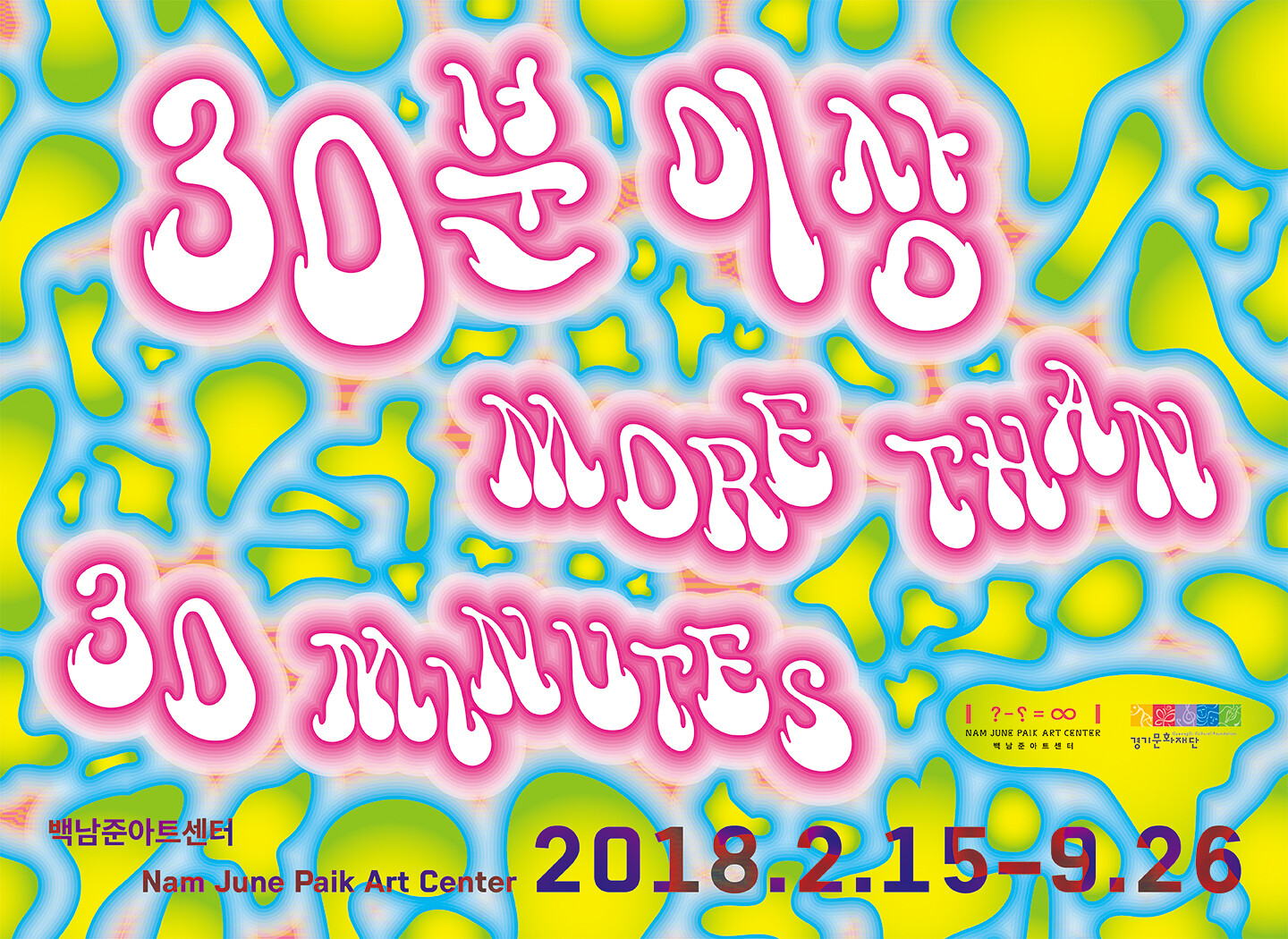February 15–September 26, 2018
10 Paiknamjune-ro, Giheung-gu, Yongin-si
Gyeonggi-do
17068
Korea
Hours: Tuesday–Sunday 10am–6pm
T +82 31 201 8500
F +82 31 201 8530
press@njpartcenter.kr
Artists: Gregory Battcock, Nam June Paik, Shigeko Kubota, Aldo Tambellini, Allan Kaprow, Otto Piene, James Seawright, Thomas Tadlock
Curated by Jeong-hwa Goo
Organized and Hosted by Gyeonggi Cultural Foundation, Nam June Paik Art Center
More than 30 minutes is an exhibition that sheds new light on Nam June Paik’s video art in the context of the Counterculture that swept America and Europe in the 1960s. Nam June Paik’s work was also influenced by such a cultural background of American society in the ’60s, a decade in which reflections on the Western civilization gradually grew into a movement against the established values. Behind Nam June Paik’s progressive video art exists a new vision of communication sought in the midst of the Countercultural upheaval. It was also Paik’s urgent solution for contemporary people who just entered the age of commodification and automation.
The title More than 30 minutes came from the text “Afterlude to the Exposition of Experimental Television”(1963) written by Paik, in which he encouraged viewers to watch his television more than 30 minutes. The exhibition interpreted the meaning of 30 minutes as a requisite for sympathy with others as well as a journey of communication. According to Paik, video art is not only a passage of “harmonious chaos” to escape from now and here, but also a starting point of imagination to move into there and beyond. We hope that his video art will melt our heart overwhelmed by the flood of information into a strong bond of sympathy.
The exhibition consisting of four sections features 22 works of video, video sculpture and drawing as well as 40 related materials.
The first section “Flower Children” showcases three video works and a video sculpture Flower Child that Paik created for Allen Ginsberg (1926–1997), a leading icon of counterculture movement, the experimental theatre group Living Theatre and musician John Cage (1912–1992). “Flower Children” is a term referring to the American hippie generation. Hippies who enjoyed using flowers as a symbol of “peace” and “love” dreamed of a new global community where labor and play are creatively combined, while making fun of the established order and values. Paik’s witty and innovative video works are a tribute to counterculture heroes, expressing his love and respect for them.
In the second section titled “Psychedelic + Cybernetics = ??,” Nam June Paik’s experimental TV series and video works using the broadcast system are on display. His TV series are an attempt to break new ground in art by merging psychedelic culture of the hippies, which was a major keyword in American society in the 1960s, with cybernetics that announced the advent of technological advancement. This section provides opportunities to experience Nam June Paik’s creative and powerful disturbing tactics regarding the television system, which is a substitute for a network of products. Among the works in this section are 9, 23, 69 Experiment with David Atwood, The Medium is the Medium, Video Synthesizer and Video Commune.
“Turn on, Tune in, Drop out” is a popular slogan used by hippies in the 1960s as well as a message that contemporary video artists paid attention to. This section includes Paik’s interesting works showing the effects of psychedelic experience created during the process of examining the human brain and mind through the mediums of television and video. Autography No.1 Diary inside Womb including his conversations with parents, Danger Music for Dick Higgins and Merce by Merce by Paik, an innovative video performance offering video effects transcending the boundaries of time and space are on view.
The last section “Video Telepathy” introduces Nam June Paik’s communication art that connects the human mind and behavior at the level of simultaneity, based on the feedback mechanism of cybernetics that cause and effect are connected to each other. The section shows the video works for broadcasting as follows: You Can’t Lick Stamps in China, a cultural, anthropological video travelogue; Wrap around the World for the 1988 Seoul Olympics, a proof of both unity between East and West and of the end of Cold War confrontation; Tiger Lives representing a wish for the new millennium for the Korean people suffering from ideological conflicts. Nam June Paik sowed the seeds of the new medium of video in this tough global community based on the belief that heartfelt communication could create a new meaning. Ultimately it is up to each of us to sprout the seeds and form a forest.



